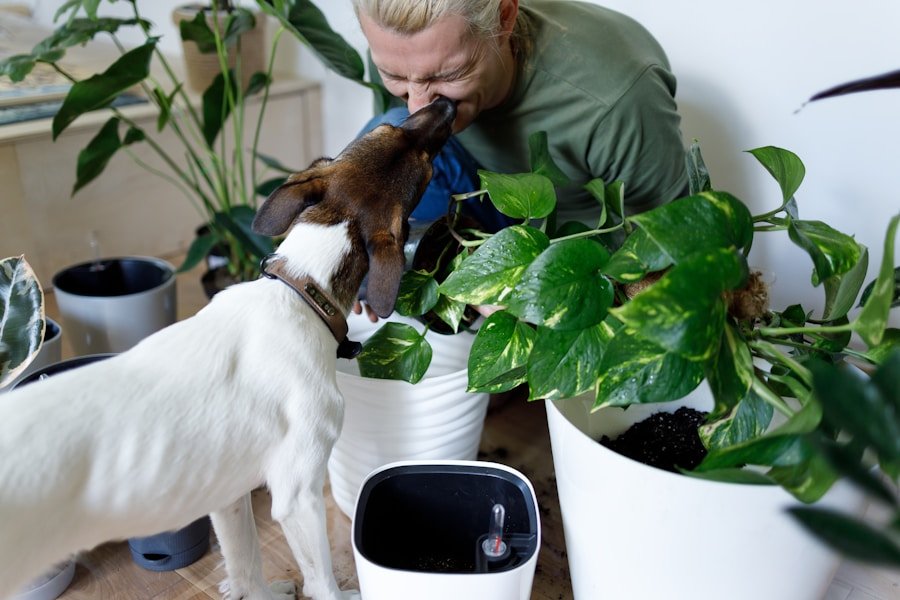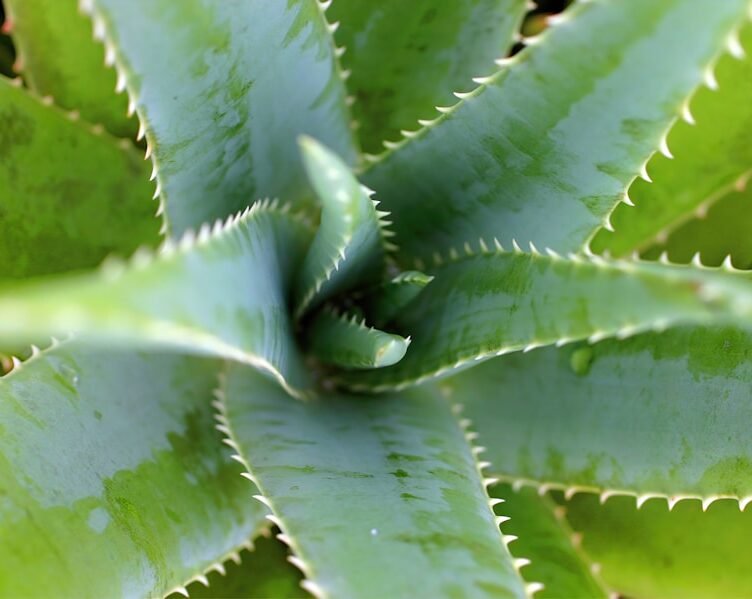Growing medicinal plants indoors offers numerous advantages for both individuals and the environment. One of the key benefits is the convenience of having a constant supply of fresh medicinal herbs on hand. By cultivating these plants indoors, individuals can access natural remedies for common health issues such as headaches, digestive problems, and stress at any time.
Moreover, indoor cultivation allows for precise control over growing conditions, ensuring that the plants are free from pesticides and other harmful chemicals. Another significant advantage of indoor cultivation is the ability to grow medicinal plants throughout the year, regardless of the climate or season. This is particularly beneficial for individuals living in regions with harsh winters or extreme temperatures, where outdoor cultivation may not be possible.
Furthermore, growing medicinal plants indoors can contribute to a more sustainable lifestyle by reducing the need for store-bought remedies, which often come in plastic packaging and are transported long distances. Overall, indoor cultivation of medicinal plants provides a convenient, sustainable, and environmentally friendly means of accessing natural remedies.
Key Takeaways
- Cultivating medicinal plants indoors provides easy access to natural remedies for common ailments
- Choosing the right medicinal plants for indoor cultivation ensures a sustainable and effective home pharmacy
- Creating a healthy indoor environment for medicinal plants involves proper lighting, temperature, and humidity control
- Essential tools and supplies for indoor medicinal plant cultivation include pots, soil, watering cans, and organic fertilizers
- Harvesting and using medicinal plants grown indoors allows for fresh and potent herbal remedies for self-care
Choosing the Right Medicinal Plants for Indoor Cultivation
When it comes to choosing which medicinal plants to cultivate indoors, it’s essential to consider various factors such as space, light, and personal health needs.
Popular Medicinal Plants for Indoor Cultivation
Some popular medicinal plants that are well-suited for indoor cultivation include aloe vera, lavender, peppermint, and chamomile. These plants are relatively low-maintenance and can thrive in indoor environments with proper care.
Health Benefits of Medicinal Plants
Additionally, they offer a wide range of health benefits, from soothing skin irritations to promoting relaxation and stress relief. It’s also important to consider the specific health needs of the individual when choosing which medicinal plants to cultivate indoors. For example, individuals with respiratory issues may benefit from growing eucalyptus or thyme, while those with digestive problems may find relief from growing ginger or fennel.
Creating a Personalized Indoor Garden
By selecting medicinal plants that address specific health concerns, individuals can create a personalized indoor garden that meets their unique wellness needs. Ultimately, choosing the right medicinal plants for indoor cultivation involves considering factors such as space, light, and personal health needs to create a thriving indoor garden.
Tips for Creating a Healthy Indoor Environment for Medicinal Plants
Creating a healthy indoor environment for medicinal plants involves providing the right conditions for optimal growth and wellness. One of the most important factors to consider is light, as many medicinal plants require ample sunlight to thrive. To ensure that indoor plants receive enough light, it’s essential to place them near a south-facing window or provide supplemental grow lights.
Additionally, maintaining proper humidity levels is crucial for indoor plant health, as many medicinal herbs prefer higher humidity levels. This can be achieved by using a humidifier or placing a tray of water near the plants to increase moisture in the air. Another key aspect of creating a healthy indoor environment for medicinal plants is maintaining proper air circulation and ventilation.
Good air circulation helps prevent mold and mildew growth while also promoting healthy plant growth. This can be achieved by using fans or opening windows to allow fresh air to circulate throughout the space. Additionally, it’s important to monitor and regulate the temperature of the indoor environment to ensure that it remains within the optimal range for the specific medicinal plants being cultivated.
By creating a healthy indoor environment with adequate light, humidity, air circulation, and temperature control, individuals can support the growth and wellness of their medicinal plants.
Essential Tools and Supplies for Indoor Medicinal Plant Cultivation
| Medicinal Plant | Growth Time | Light Requirement | Watering Frequency |
|---|---|---|---|
| Lavender | 3-4 months | Full sun | Once a week |
| Aloe Vera | 8-12 months | Indirect sunlight | Every 2-3 weeks |
| Basil | 2-3 months | Full sun | Twice a week |
| Mint | 2-3 months | Partial shade | Twice a week |
Cultivating medicinal plants indoors requires a few essential tools and supplies to ensure successful growth and maintenance. One of the most important tools for indoor plant cultivation is a set of high-quality gardening tools, including a trowel, pruners, and watering can. These tools are essential for planting, pruning, and watering medicinal plants to promote healthy growth.
Additionally, having a selection of organic potting soil and fertilizer is crucial for providing the necessary nutrients for indoor plants to thrive. In addition to gardening tools and soil, having proper containers for indoor plant cultivation is essential. Choosing the right containers depends on the specific needs of the medicinal plants being grown, but in general, containers should have adequate drainage holes to prevent waterlogging and root rot.
It’s also important to have a selection of pots or containers in various sizes to accommodate different plant growth stages. Finally, having access to natural pest control methods such as neem oil or insecticidal soap can help prevent and manage pest infestations without the use of harmful chemicals. By having essential tools, soil, containers, and natural pest control methods on hand, individuals can create an optimal environment for cultivating medicinal plants indoors.
Harvesting and Using Medicinal Plants Grown Indoors
Harvesting and using medicinal plants grown indoors involves careful timing and proper techniques to ensure maximum potency and effectiveness. When it comes to harvesting, it’s important to wait until the plant has reached its peak growth stage before harvesting any leaves, flowers, or roots. This typically occurs during the plant’s flowering stage when its essential oils and active compounds are at their highest concentration.
Harvesting should be done in the morning when the plant’s essential oils are most potent and before the sun has had a chance to evaporate them. Once harvested, medicinal plants can be used in a variety of ways to create natural remedies for common ailments. For example, fresh herbs such as mint or basil can be used to make herbal teas or infused oils for topical use.
Dried herbs can be used to make tinctures or salves that can be stored for long-term use. Additionally, fresh or dried herbs can be used in cooking to add flavor and health benefits to meals. By harvesting medicinal plants at their peak potency and using them in various preparations, individuals can maximize the health benefits of their indoor-grown herbs.
Common Challenges and Solutions for Indoor Medicinal Plant Cultivation
While cultivating medicinal plants indoors offers many benefits, there are also common challenges that individuals may encounter during the growing process.
Pest Infestations: A Common Challenge
One common challenge is pest infestations, which can damage plant health and reduce yields if not addressed promptly. To prevent and manage pest infestations, individuals can use natural pest control methods such as neem oil or insecticidal soap to deter pests without harming the plants or the environment.
Maintaining Proper Moisture Levels
Another common challenge for indoor plant cultivation is maintaining proper moisture levels in the soil. Overwatering or underwatering can lead to root rot or dehydration, both of which can harm plant health. To address this challenge, individuals should monitor soil moisture levels regularly and adjust their watering schedule as needed based on the specific needs of each plant.
Adequate Air Circulation and Ventilation
Additionally, providing adequate air circulation and ventilation can help prevent mold and mildew growth that often occurs in overly moist environments. By addressing common challenges such as pest infestations and moisture management with natural solutions and proper care techniques, individuals can overcome obstacles to successful indoor medicinal plant cultivation.
Sustainable Practices for Indoor Medicinal Plant Cultivation
In addition to providing natural remedies for common ailments, cultivating medicinal plants indoors offers an opportunity to practice sustainable gardening methods that benefit both individuals and the environment. One sustainable practice is using organic and biodegradable materials such as compostable pots and natural fertilizers to reduce waste and minimize environmental impact. By choosing sustainable materials for indoor plant cultivation, individuals can minimize their carbon footprint while supporting healthy plant growth.
Another sustainable practice for indoor medicinal plant cultivation is conserving water by using efficient watering techniques such as drip irrigation or bottom watering. These methods help reduce water waste by delivering water directly to the plant’s roots without excess runoff or evaporation. Additionally, collecting rainwater for indoor plant watering is another sustainable practice that reduces reliance on municipal water sources while providing natural hydration for medicinal plants.
Furthermore, practicing companion planting by growing complementary herbs together can help naturally deter pests and promote healthy plant growth without the need for chemical pesticides or fertilizers. By implementing sustainable gardening practices such as using organic materials, conserving water, and practicing companion planting, individuals can cultivate medicinal plants indoors in an environmentally friendly manner. In conclusion, cultivating medicinal plants indoors offers numerous benefits for individuals seeking natural remedies for common ailments while also supporting sustainable gardening practices.
By choosing the right medicinal plants for indoor cultivation based on space, light, and personal health needs, individuals can create a personalized indoor garden that meets their wellness goals. Creating a healthy indoor environment with proper light, humidity, air circulation, and temperature control is essential for supporting the growth and wellness of medicinal plants. Essential tools and supplies such as gardening tools, soil, containers, and natural pest control methods are crucial for successful indoor plant cultivation.
Harvesting medicinal plants at their peak potency and using them in various preparations allows individuals to maximize their health benefits while overcoming common challenges such as pest infestations and moisture management with natural solutions and proper care techniques. Finally, practicing sustainable gardening methods such as using organic materials, conserving water, and practicing companion planting supports environmentally friendly indoor medicinal plant cultivation. Overall, cultivating medicinal plants indoors provides a convenient, sustainable, and environmentally friendly way to access natural remedies while promoting wellness and environmental stewardship.
FAQs
What are medicinal plants?
Medicinal plants are plants that have been used for their therapeutic properties for centuries. They contain compounds that have been found to have medicinal benefits and can be used to treat various ailments and health conditions.
Why cultivate medicinal plants indoors?
Cultivating medicinal plants indoors allows for easy access to fresh herbs and plants for medicinal purposes. It also provides a controlled environment for growing plants, regardless of the outdoor climate or season.
What are some common medicinal plants that can be cultivated indoors?
Some common medicinal plants that can be cultivated indoors include aloe vera, lavender, peppermint, chamomile, and basil. These plants have various medicinal properties and can be used to make teas, tinctures, and salves.
What are the benefits of cultivating medicinal plants indoors?
Cultivating medicinal plants indoors allows for a fresh and readily available supply of herbs for medicinal use. It also provides a sense of self-sufficiency and the opportunity to connect with nature.
What are some tips for cultivating medicinal plants indoors?
Some tips for cultivating medicinal plants indoors include providing adequate sunlight, using well-draining soil, and maintaining proper humidity levels. It’s also important to research the specific needs of each plant and provide the appropriate care.
Are there any potential challenges to cultivating medicinal plants indoors?
Some potential challenges of cultivating medicinal plants indoors include limited space, the need for proper lighting, and potential pest infestations. It’s important to address these challenges by choosing suitable plant varieties and providing the necessary care and maintenance.








1 Comment